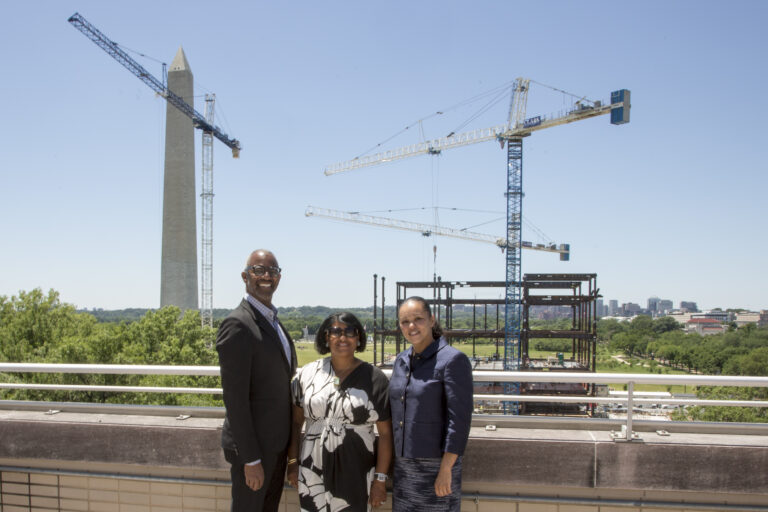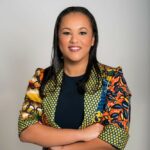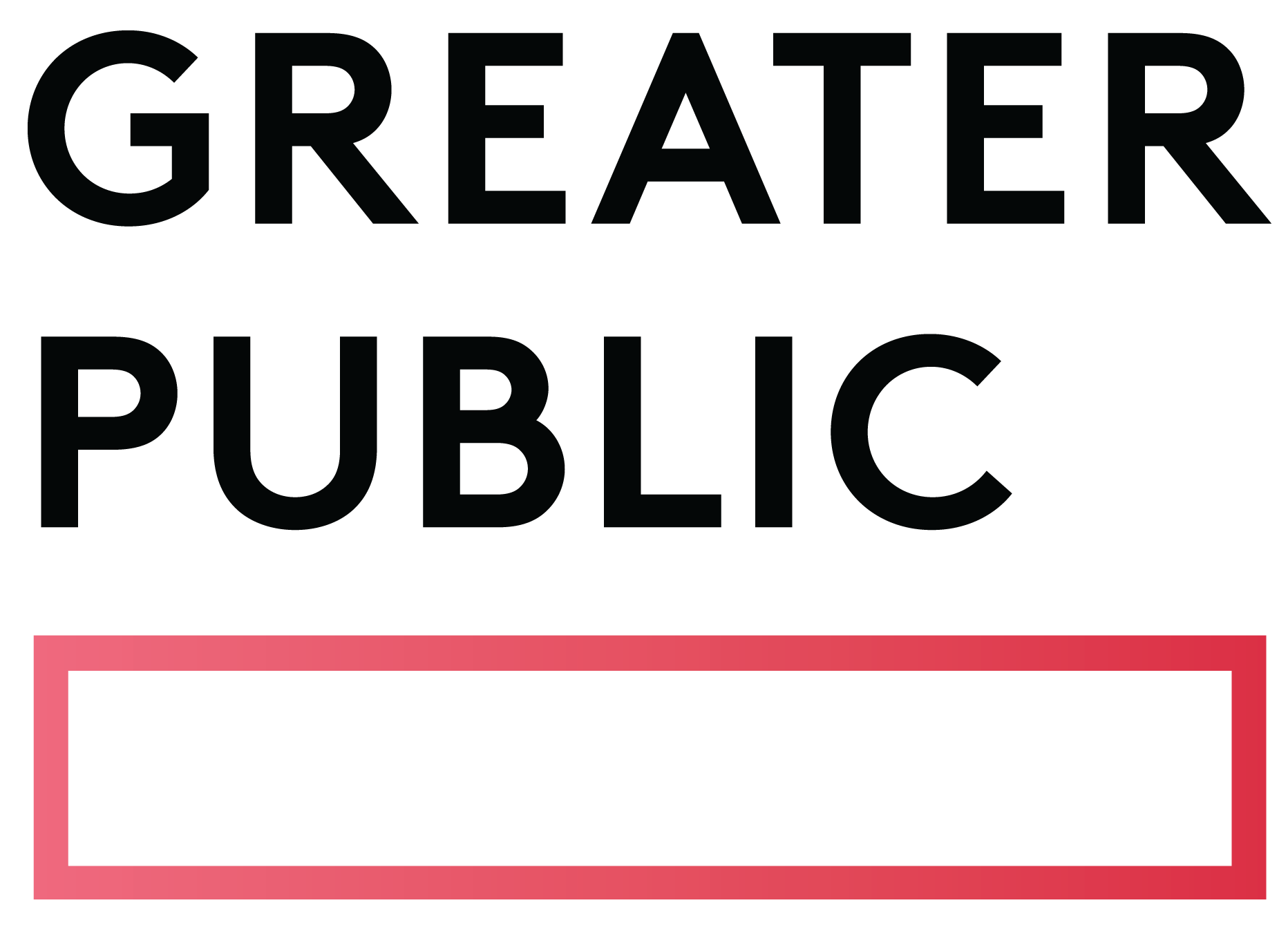Related Articles
Subscribe to the Greater Public newsletter to stay updated.
This site is protected by reCAPTCHA and the Google Privacy Policy and Terms of Service apply.

When the National Museum of African American History and Culture (NMAAHC) opened as the 19th Museum of the Smithsonian Institution in Washington, DC in 2016, many were unaware of the profound movement of philanthropy and community-building that had been brought to life as a part of the institution’s creation.
The Smithsonian raised more than $400 million through private philanthropy to create the Museum. Much of this sum came from African American donors, some of whom were first-time philanthropists. The story of how the NMAAHC came to be demonstrates the power and potential of Black philanthropy and points the way for a more equitable philanthropic future for all of our nation’s institutions.
The idea for a museum of African American history and culture was first proposed by a group of Civil War veterans in 1915. Congressional appropriations were made in the subsequent year, then shelved, and ultimately reallocated to other projects in 1929 due to the Great Depression.
For decades the idea of a museum lingered. In 1985, former Congressman Mickey Leland resurrected the idea. After LeLand’s passing, Congressman John Lewis took the reins in advocating for the museum. An initial feasibility study was commissioned through the National Park Service in 1988 and in 2001 a Presidential Commission was formed to further explore the concept. In 2003 President George W. Bush signed the National Museum of African-American History and Culture Act, which authorized the creation of the Museum as the 19th museum of the Smithsonian Institution.
It took another 13 years to design, fund, and build the Museum and its programs. When NMAAHC opened to national acclaim on September 24, 2016, it was more than 100 years after Civil War veterans advocated for, and the federal government first funded, the idea.
NMAAHC was originally estimated to cost $500 million. Through a true public-private partnership, it was projected that funding for the Museum would come through federal appropriations ($250 million), matched by private philanthropic dollars ($250 million). However, federal appropriations would only be distributed proportionally with the private philanthropic dollars raised. Two major challenges loomed: 1) The Smithsonian did not have a pipeline of donors for the project because historically it did not have a diverse donor base, and 2) The project had not yet solidified an architect, site location, content areas, programs, or curators. NMAAHC’s fundraising team was going to have to start from scratch.
When Lonnie Bunch was hired as founding director in 2005, his vision for the Museum was clear: to “tell the complete American story from an African American lens.” His aspirational vision was foundational to the creation of the Museum and the securing of early philanthropic support. Exceptionally talented curators were hired to help bring Lonnie’s vision, and a community’s story, to fruition. The Council, made up of top African American philanthropists and businesspeople, was simultaneously selected to vet the museum’s scope and focus, help open doors to high-level prospects, and advance fundraising efforts.
Ultimately, 25 development staff, including eight frontline fundraisers, made up the team that raised a total of more than $400 million to open the Museum. All of the frontline fundraisers were Black. All four of the individual giving officers were Howard University alumni. Three members of the team previously worked in development at Howard, and one had been the director of a Black museum in Miami. Our team’s education and experiences were solidified at Black institutions, preparing us for the colossal task before us. It was the strongest fundraising team I had ever been a part of, and the most intense and fulfilling project I had ever worked on.
Early in our evolution, NMAAHC incorporated a donor recognition and benefit structure into its operations, coining the term Founding Donors to recognize the donors that committed $1 million or more. Early support, including gifts from Oprah Winfrey, Ken and Kathy Chenault, Dick Parsons, Kellogg Foundation, Lilly Foundation, and American Express, helped build credibility and expectations for the Museum as we embarked on our journey.
To bring the Museum to life prior to the physical structure opening, integrative and engaging initiatives were undertaken to show how the museum would strengthen the Smithsonian and the United States.
In 2008, 4,000 square feet of temporary exhibition space opened at the National Museum of American History to showcase the quality and variety of NMAAHC’s exhibitions. Exhibits like Changing America, Scurlock Studios, and Slavery at Thomas Jefferson’s Monticello introduced Smithsonian visitors and prospective donors the breadth, depth, and diversity of the American story. A Save Our African American Treasures program was created and toured across the country, teaching communities how to preserve and care for their family heirlooms and historical objects.
In 2010, an international design competition attracted top architects to submit their creative designs for the Museum. The top five contenders had their 3D renderings on public display in the Smithsonian Castle. The selection of architects David Adjaye, Phil Freelon, and Max Bond generated enthusiasm from donors and the community more broadly, as they were a world-class team coming together to design a world-class museum. Solidifying the National Mall as the Museum’s location further added to the anticipation. The Museum’s potential to tell a more complete American story from an African American lens, thereby transforming the Smithsonian – and the country – was becoming more concrete. Many factors helped lay the foundation for a successful fundraising campaign.
Using standard development strategies, our fundraising team began identifying and cultivating donor and prospect networks in major metropolitan markets like New York, DC, San Francisco, Los Angeles, Houston, Miami, and Chicago. I was assigned to California, Texas, and Florida.
Using an expanded stewardship structure (Founding Donors: $1M+, Major Contributors: $100K – $999K, 2015 Society: $25K – $99K, Ambassadors: $5K – $24K and Charter Members: $25+), we identified new prospects by donor level. I was able to uncover hundreds of prospects in a short period of time, and the Smithsonian research team helped me vet and rate the prospects. Regional campaign strategies evolved through a relentless process of identifying and cultivating prospects. During this stage, we often worked 12-hour days building networks, meeting with new prospects and connectors, and building spreadsheets tracking donor engagement.
We had to identify and engage key connectors in each region. For instance, in San Francisco, former Mayor Willie Brown was one of the connectors that helped us garner significant Bay-Area support. Fundraising success required us to know business, political, and social landscapes, and the faux pas to avoid, in each region. No two cities are philanthropically alike. To be a successful regional fundraiser, you must understand the nuances of how a community and its network work.
Once a solid foundation was laid, we worked to secure a Founding Donor ($1M+) in each region to help set the bar for our philanthropic expectations. I would like to personally thank Deborah Santana for stepping into a leadership role and making the first Founding Donor gift in the Bay Area. This gift laid the foundation for being able to host the first high level cultivation event in California and ultimately brought in $60M from the state. Ann and Gordon Getty generously agreed to host a high-level cultivation event at their home, where we announced Deborah’s Founding Donor gift. Within six months of that event, we closed $8M in philanthropic commitments from Bay Area donors. We were on our way to success.
Simultaneously, my colleague Margaret Turner began building networks and cultivating relationships within Black legacy organizations, including fraternities, sororities, and churches. As these organizations began committing $1M gifts, ripples of support started blanketing the country. These organizations were critical both for the support they provided, but also as pathways of connection to thousands of donors. Margaret and I shared mutual respect, support, and friendly competition as we competed to close the highest number of $1M gifts. Margaret was a brilliant fundraiser and invaluable colleague. We lost one of our best fundraisers when she passed in 2017. May she rest in peace.
The Smithsonian deepened our credibility by extending its institutional benefits to NMAAHC donors, providing donors with exclusive access to the breadth and depth of America’s Museums.
We were building communities within communities, and ultimately, one big community supporting the Museum. We had built credibility and people wanted to be a part of the network.
As the Museum built momentum towards Grand Opening, more opportunities to leverage stewardship benefits in our cultivation and solicitation emerged. Most Grand Opening events would be reserved for donors giving $5K or more, and recognition on permanent donor walls would be reserved for donors giving $25K or more. These new stewardship benefits helped us close a plethora of outstanding gifts we had been cultivating.
Two major donor events in our opening year (2016) helped us close an unprecedented number of gifts:
Pauletta and Denzel Washington hosted an event for $1M+ donors in California, which raised a whopping $18M. Moreover, the publicity from the event sped up our solicitations with deeply cultivated donors, allowing us to close an additional 80 individual $1M+ gifts over a period of six months. Although this was a culminating event for the Museum, it took years to build the network to bring it to fruition.
A subsequent event at the National Museum of American History, overlooking the almost-completed NMAAHC, leveraged existing 2015 Society donors ($25K) to encourage others to give at the same level. To ensure it was a fundraising event, we asked all current 2015 Society donors if they wanted to co-host a fundraiser with the Museum. Co-hosts had the responsibility of making a $25K gift and a willingness to secure two new $25K gifts. Sixteen of the 89 2015 Society donors at the time agreed to co-host. This event resulted in us tripling the number of 2015 Society donors we had. 110 new $25K gifts were made leading into the event, and additional 100 $25K gifts closed after the event. Never underestimate the power of a fundraising host committee and their network!
Grand Opening itself was underwritten by five category-exclusive sponsors. By having Grand Opening underwritten, we could wholly utilize our Grand Opening events as exclusive stewardship opportunities for the generous donors who had made the Museum possible. Opening events were segmented by level to encourage even larger gifts:
Reception at the White House and recognition in the New York Times: $1M+
Music Legends concert at the Kennedy Center: $100K+
Tickets to the Grand Opening ceremony, dinner and reception: $5K+ and Charter Members
Grand Opening of NMAAHC took place on September 24, 2016, with a never-before-seen campaign behind it. What started as a hope and a dream of the Civil War veterans more than 100 years ago was shepherded into existence through relentless pursuit. It required vision, partnerships, programming, networking, leverage, accountability, persistence, the good will of philanthropists, Congressional support, and best practices in fundraising. It could not have happened without the support of Black institutions and thousands of first-time Black philanthropists. Each of us was fortunate to be selected to be a part of the team to bring the National Museum of African American History and Culture to fruition. Our work paid honor and tribute to our ancestors, and they, in turn, guided us along our journey.
I would like to acknowledge my NMAAHC frontline fundraiser colleagues, as this was truly a team effort: Adrienne Brooks (Director), Margaret Turner, Minda Logan, Nia Davis, Phyllis Cunningham, Princess Gamble, Thameenah Muhammad, and the internal development team that supported our fundraising efforts. Moreover, I would like to thank the 134 Founding Donors, 112 Major Contributors, 354 2015 Society Donors, 770 Ambassadors, and more than 200,000 Charter Members that contributed to this project by Grand Opening. With your support, the Museum was able to become a reality.
The story of the NMAAHC campaign is a stunning example of modern Black philanthropy. It demonstrates that the Black community and Black institutions have much more to give.
Black households already donate 25% more of their income each year than do white households. This is despite the fact that the average white family in the U.S. holds 10 times the net wealth of the average Black family. Black donors have philanthropic interests across all sectors of work: the environment, health, religion, education, climate change, and the arts, among others. Due to the historical inequities in society, Black donors will generally make investments in causes that directly or indirectly benefit and uplift the Black community.
Organizations that wish to benefit from Black philanthropy must be prepared to invest in:
These are investments that allow us, as organizations, to knit together a more complete picture of the American experience, just as the NMAAHC expanded our ability to tell a more complete American story.
From another perspective, there should be more intentional resources directly invested in Black institutions. Black institutions historically have been, and currently are, the catalysts for knowledge-building, upward mobility, social justice, and economic equality within the African American community, holding unmatched value and impact. Despite these positive results, these institutions continue to receive significantly less funding than their white organizational counterparts. Indeed, the campaign to fund NMAAHC would not have been possible without the brilliance that was cultivated and supported at Black institutions. If we are truly going to achieve the American ideal of an equitable and just society, donors and institutional partners must give, or give more generously, to Black institutions. The only way to remedy the wrongs of the past, is to make intentional investments in our future.
Above photo: Founding Donors Tony and Robyn Coles with Anna Barber overlooking the NMAAHC construction site in 2014.
Greater Public is seeking writers familiar with public media for contract blog posts. Posts will primarily focus on fundraising case studies and will include a per-post honorarium. Please contact eguettler@greaterpublic.org to learn more.

This site is protected by reCAPTCHA and the Google Privacy Policy and Terms of Service apply.
New to Greater Public? Create an account.
